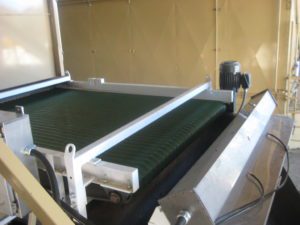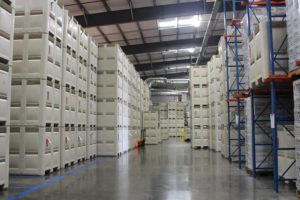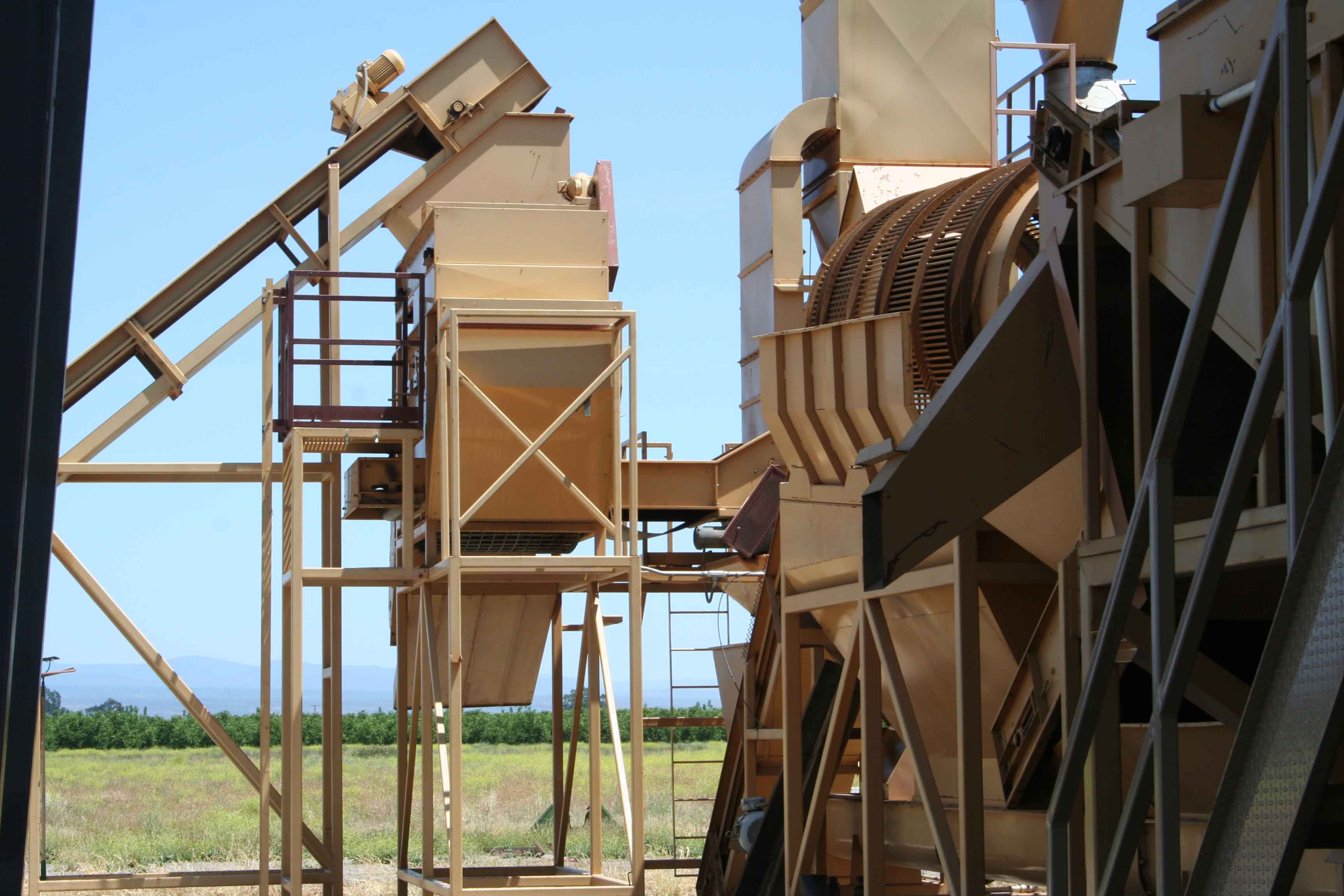Automation, food safety and efficiency are driving forces in nut processing equipment innovation.
Leaders in some of the major walnut processing equipment and systems design companies spoke about some of the changes that have occurred in walnut hulling, sorting and drying.
The process begins right after walnuts are picked up from the orchard floor and delivered to a huller. Unlike almonds, walnuts are not stockpiled due to their high moisture content. They must be hulled and dried quickly to preserve quality.
Hullers first separate out field debris, sticks, dirt and rocks. Next, hulls are removed and undesirable nuts are sorted out. The nuts next go into drying bins until they reach stable targeted moisture levels. At that point they can be stored or processed further for different markets.

Rising Labor Costs
The rising cost of hand labor has definitely made automation critical in walnut processing, said Chris Sinclair of Woodside Electronics Corp or WECO. This Woodland, California-based company is known for its development of optical sorting. The founder of the company, in 1999 developed a high-resolution optical sorting technology for the walnut hulling industry. The next step for WECO was development of Xres camera technology for in-shell walnut sorting.
Sinclair said technology advances allow more product to move through at a much faster rate. Mechanical separation of sticks, green, black and sunburned walnuts from clean nuts is more cost effective. The company developed a new camera system in 2012 called Chromax that has greatly improved accuracy and performance. This year WECO is providing a new infrared component to the cameras for the 2018 harvest.
Labor costs and regulations are driving the move to automation, Sinclair confirmed.
WECO customers also need to move much higher volumes through the huller in such a short period of time and that need has driven the equipment innovations.

High-Volume Hulling
Sinclair, along with Steve Smallwood of Jessee Equipment in Chico and Larry Grossi of Grossi Fabrication in Hughson, said the walnut industry’s move to the Chandler variety has made high-volume hulling a necessity.
“We have to process more per hour than we did even five years ago,” said Smallwood.
In years past, Grossi said, an eight week harvest period was normal with early, middle and late varieties being delivered in fairly equal quantities. Popularity of the Chandler variety, spurred by customer preference for the light color pellicle, means high-volume of nuts delivered to hullers in a relatively shorter period.
Huller capacity has had to increase to meet the demand. Grossi said normal capacity 15 years ago was 10-12 tons per hour. Now, Grossi standard systems are facilities designed for 20-40 tons per hour operations needed to keep pace with daily nut deliveries from the orchard.
Energy Consumption
Energy consumption is another concern for processors. Smallwood said Jessee is addressing that—along with food safety issues with its drying systems. Forced hot air is used to remove surface moisture from the nuts. Moisture sensors determine drying times. The equipment is also made with stainless steel or galvanized steel, so no paint chips come into contact with the product.
Automation
Their customers are looking for automation in their processing systems, Smallwood said, and the company has responded with touch screens and fully adjustable control panels. Their hulling lines come in varying capacities from 10 tons per hour to 30 plus tons per hour. The lines also have high volume rock and debris removal and a de-watering system.
Their washing system for hulling also uses less water. Higher pressure cleaning uses half the amount of water per minute and volume can be adjusted to deal with higher levels of mud or debris on the product.
Jessee automation allows for individual truck load tracking for food safety requirements and yield data. Food safety is going to be an important requirement in the future, Smallwood said.
Grossi said the systems designed by his company are aimed at preparing the walnuts for the next step in processing whether it is in pre-cleaning, hulling, drying or shelling.
“We prepare and clean product mechanically so where it goes further in processing the condition will allow the electronics to perform at maximum efficiency,” Grossi said.
He added that his drying systems are now designed with an automated recirculation system that has the ability to recirculate heated air in the building which will reduce fuel and energy costs.
It is important, Grossi added, that when products are separated in the system, they remain separated so each can be handled according to need. Green, adhering hulls, higher moisture nuts may constitute only a small percentage of a load, but their presence also determines drying time. Separating those nuts out saves time and energy, Grossi said.
Color Sorters
He said they integrate WECO color sorters into the system to reduce labor needs and make hulling more efficient. Labor has become a big problem for hullers as the larger plants run is dictated by harvest rate. Erratic schedules make it hard to keep employees, he said.
Drying Efficiency
More walnuts are also arriving at hullers with a higher moisture content than in years past. That is why, Grossi said, it is important to separate out the high moisture nuts and dry them separately because mixed with lower moisture nuts they can add hours to the drying time. That is not only a waste of energy, he said, but over drying affects nut quality and can reduce your shippable weight.
WECO’s WalnutTek system is addressing drying efficiency with several system components. The automated moisture meter with a control door will initiate burner shutdown then the fan to save energy and fuel. This also prevents over drying.
The system includes automatic fill gate oversight along with moisture monitoring and control of fill doors. This is also labor saving as the gate is closed automatically when the fill point is reached.

Cecilia Parsons
Cecilia Parsons has lived in the Central Valley community of Ducor since 1976, covering agriculture for numerous agricultural publications over the years. She has found and nurtured many wonderful and helpful contacts in the ag community, including the UCCE advisors, allowing for news coverage that focuses on the basics of food production.
She is always on the search for new ag topics that can help growers and processors in the San Joaquin Valley improve their bottom line.
In her free time, Cecilia rides her horse, Holly in ranch versatility shows and raises registered Shetland sheep which she exhibits at county and state fairs during the summer.
















